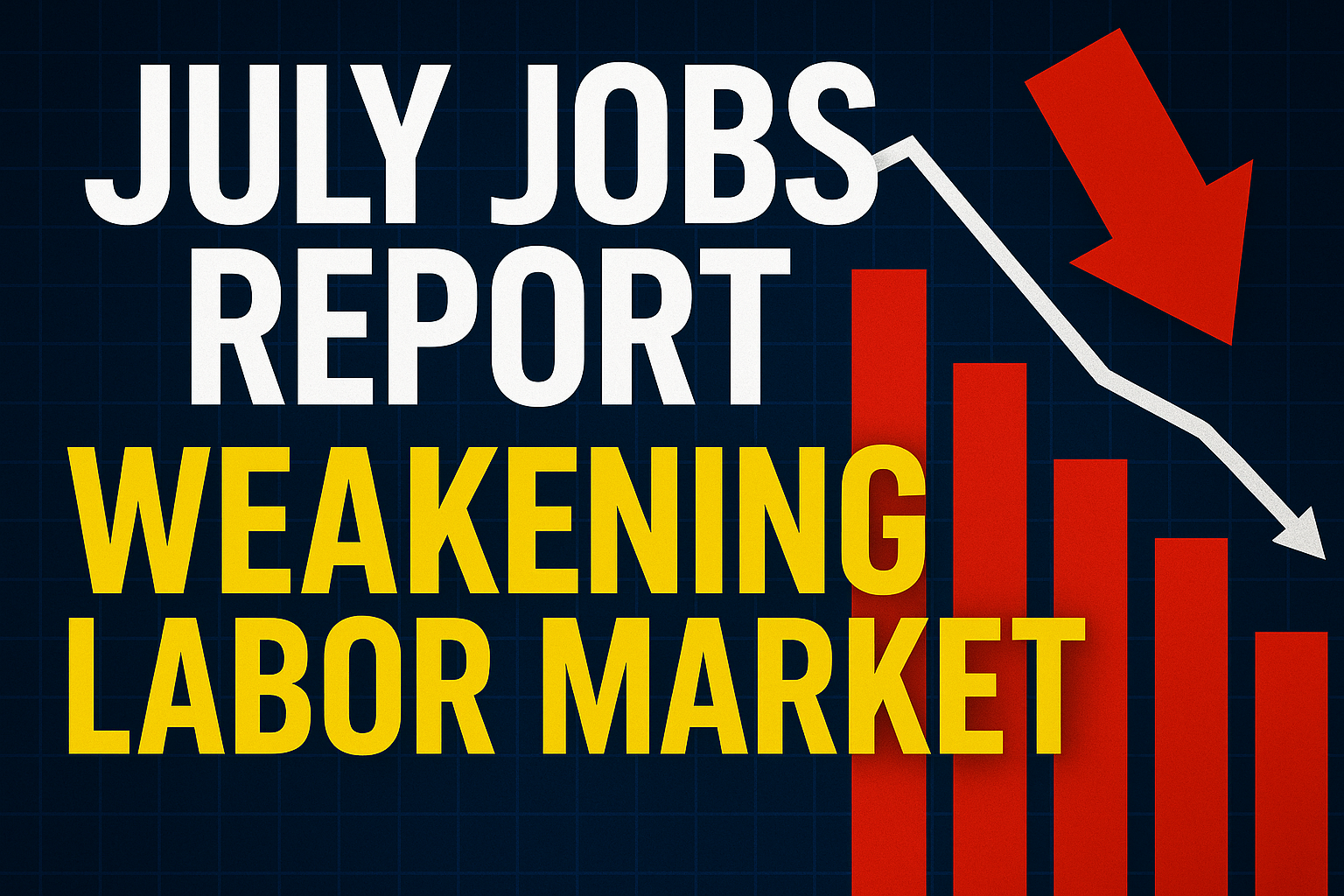July Jobs Report Signals Weakening Labor Market—What It Means for Investors

As an investor, you know timing is everything.
And when it comes to macroeconomic signals, few indicators carry as much weight as the monthly U.S. jobs report. The July 2025 numbers are in—and they’re painting a clear picture: the labor market is weakening faster than many expected.
Let’s break down what happened, why it matters, and how it could influence your capital strategy heading into Q4.
📉 The Headline: July Jobs Miss the Mark—Badly
The U.S. economy added just 73,000 jobs in July—far below expectations that ranged from 110,000 to 140,000. But it gets worse. The Bureau of Labor Statistics also revised down the job creation figures for May and June by a combined 258,000 jobs.
- May: Originally reported at 144,000 → Revised to 19,000
- June: Originally reported at 147,000 → Revised to 14,000
These aren’t small adjustments. They reflect a growing disconnect between headline optimism and ground-level economic performance.
📈 Unemployment and Wage Growth—Both Moving the Wrong Direction
- Unemployment: Rose from 4.1% in June to 4.2% in July
- Wage Growth: Continued its decline to 3.9%, a downward trend since 2022
This signals weakening worker demand, not just in one-off sectors, but across broader industries.
🏥 Who’s Hiring (and Who’s Not)
- Education & Health Services: +79,000 jobs (July’s bright spot)
- Manufacturing: –11,000 jobs
- Federal Government: –12,000 jobs in July; down 84,000 jobs year-to-date
Despite federal initiatives and trade policies aimed at bolstering domestic manufacturing, job losses continue in that sector—raising questions about the timeline and effectiveness of current strategies.
🔎 Layoffs Surge Across Key Industries
According to the latest Challenger Report, these are the 2025 job cut leaders (year-to-date):
- Government: 292,000 layoffs
- Tech: 89,000 (↑ 36% vs. 2024)
- Retail: 80,000 (↑ 249% vs. 2024)
Primary drivers:
- Budget reductions (especially from the federal government)
- Economic uncertainty and inflation
- Business closures, bankruptcies, and restructurings
- AI and automation (20,000+ jobs lost to tech upgrades)
🌍 Where It Hurts Most: Regional Breakdown of Layoffs
- East Coast: ↑ 219% (largely due to federal workforce cuts)
- South: ↑ 34%
- West: ↑ 11%
- Midwest: ↑ 8.7%
This is particularly relevant for real estate investors with exposure to East Coast markets—especially those with high government employment bases.
🏦 Interest Rates: The Fed Is Now Cornered
Prior to the jobs report, the probability of a Fed rate cut in September sat at 41.3%. After the release? That probability spiked to 82.8%, according to the CME FedWatch Tool.
With unemployment ticking up and job growth stagnating, the Federal Reserve is under increasing pressure to cut rates—fulfilling its dual mandate to support employment and stabilize prices.
Expect a return to:
- Lower borrowing costs
- Easier credit conditions
- Potential rounds of quantitative easing
📊 What This Means for You
As a sophisticated investor, you’re not just watching economic data—you’re interpreting how it impacts capital allocation, deal velocity, and asset performance. Here’s what to consider:
- Rate Cuts = Opportunity: Lower interest rates may unlock better financing terms. If you’re on the sidelines, this could be your signal to re-engage.
- Operational Efficiency Is King: In a soft labor market, property performance hinges on strong management and retention strategies.
- Time to Reposition: Markets reliant on federal employment may see leasing volatility—especially on the East Coast. Diversify accordingly.
Final Thought
The labor market doesn’t lie. When job creation slows, unemployment rises, and wage growth flattens, we’re seeing the early tremors of broader economic realignment.
For those of us playing the long game in multifamily and commercial real estate, this isn’t cause for panic—it’s a call to prepare. The landscape is shifting. And those who move strategically now will be in the strongest position when the cycle turns.
If you’re looking to align your portfolio with these changing tides—let’s talk.








